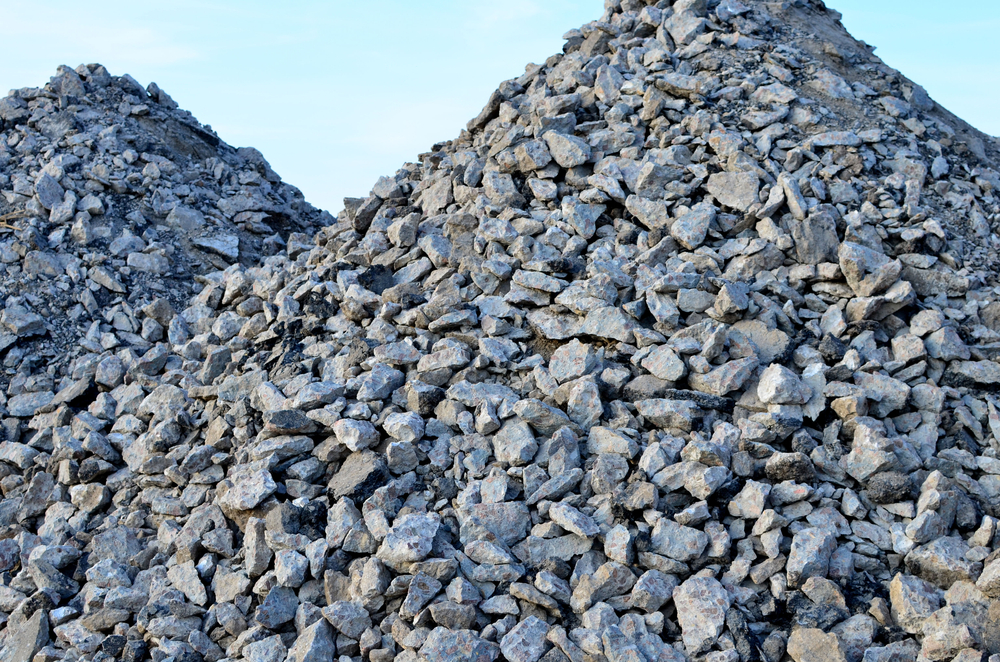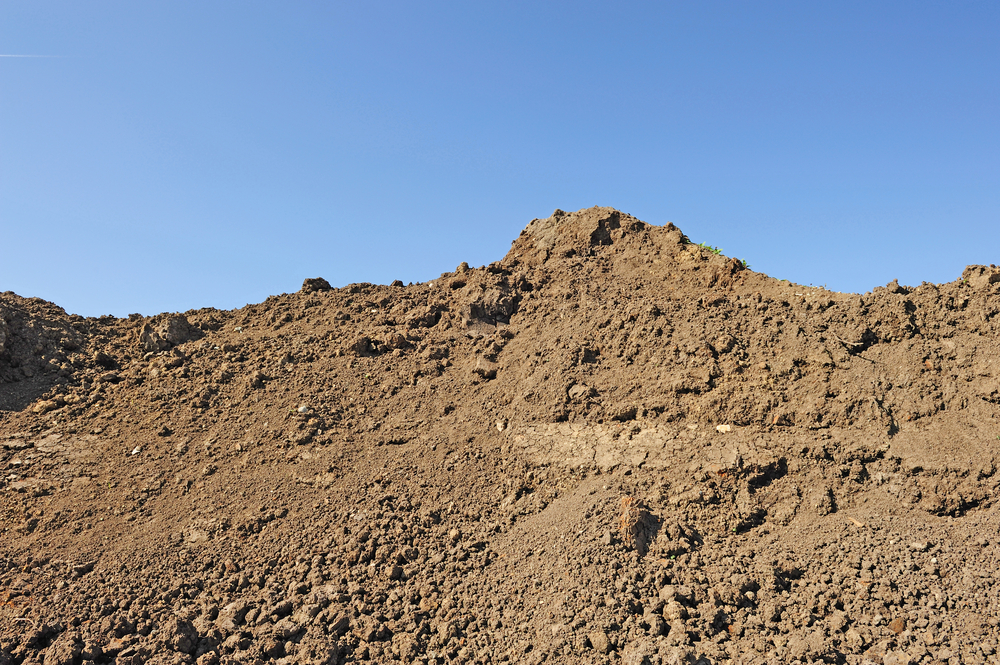February 23, 2024 - Benjamin Ehinger
How to Dispose of Rocks and Dirt: Efficient Removal Strategies
CALL NOW 844-762-8449
Disposing of rocks and dirt from your landscaping or construction project can seem daunting, but it’s crucial for maintaining a neat environment and complying with local regulations. Whether you’re revamping your garden or completing a building task, you’ll inevitably need to manage the leftover material efficiently. To start, evaluate the volume of rocks and dirt you need to dispose of, as this will determine the best disposal method. If you have a substantial amount, renting a yard waste dumpster might be your best option.
Understanding your local disposal regulations is also essential, as different areas have varying rules about dumping materials like rocks and soil. Some may offer designated disposal sites for such waste. For lighter projects, a smaller 10-yard dumpster rental is often sufficient and can be easily scheduled for drop-off and pick-up at your convenience.
 When disposing of rocks and dirt, it is paramount that you prioritize both personal safety and environmental concerns to mitigate risks and ensure responsible handling of materials.
When disposing of rocks and dirt, it is paramount that you prioritize both personal safety and environmental concerns to mitigate risks and ensure responsible handling of materials.
 When dealing with leftover materials from garden projects, it’s important to know the proper methods for disposal. The following subsections answer common queries regarding the disposal of rocks, dirt, and soil.
When dealing with leftover materials from garden projects, it’s important to know the proper methods for disposal. The following subsections answer common queries regarding the disposal of rocks, dirt, and soil.
Key Takeaways
- Assess the quantity of rocks and dirt before choosing a disposal method.
- Ensure compliance with local disposal regulations to avoid penalties.
- Consider renting a dumpster for convenient and efficient material removal.
Assessment of Material Volume
Before you begin the disposal process for rocks and dirt, accurately assessing the volume of material is crucial. This will help you determine the most cost-effective and efficient disposal method.Determining Volume
To determine the volume of your rocks, dirt, and gravel, you’ll need to measure the length, width, and height of your pile. Multiplying these dimensions gives you the volume in cubic feet. For irregularly shaped piles, estimate as closely as possible or separate the pile into smaller, regularly shaped sections and measure each one. Remember that volume conversions are necessary if you’re working with other units; one cubic yard is equal to 27 cubic feet.Estimating Disposal Needs
With the volume in hand, use a dumpster weight calculator to understand the weight of your material, as dumpsters have specific weight limits. This information will inform you of the size and number of dumpsters you will need to rent for disposal. Enter your material volume into the calculator, and it will provide an estimated weight, considering the typical weight of the material per cubic yard. This step ensures that you select a dumpster large enough to hold your material but not so large that you pay for unused space.Local Disposal Regulations
Before you proceed with disposing of rocks and dirt, it’s imperative to understand the local regulations that govern such activities. This will help you avoid any legal troubles and ensure that your disposal methods are both environmentally and community-friendly.Understanding Zoning Laws
Zoning laws can significantly impact where and how you can dispose of rocks and dirt. In many areas, these materials are classified as inert debris and can only be disposed of in specific zones. It’s essential that you check with your local zoning information to verify that you’re in compliance with land-use ordinances. Improper disposal could result in fines or other legal penalties.Finding Appropriate Disposal Sites
When searching for disposal sites, you’ll likely encounter dumpster rental restrictions. Dumpster companies may have specific rules about dumping heavy material such as rocks and dirt, since these substances can exceed weight limits and potentially damage the container or compaction equipment. Researching and choosing a disposal company that can accommodate your needs is crucial. Look for services that specialize in rock and dirt disposal, ensuring they follow local guidelines that may dictate the landfill or recycling center’s acceptance criteria.Disposal Options
When looking to clear your property of unwanted rocks and dirt, there are efficient and environmentally responsible ways to carry out the task. Renting a small roll off dumpster is often the best and easiest method to handle large loads such as rocks, dirt, and gravel.Landfill Dumping
Renting a dumpster is a straightforward method for disposing of rocks and dirt. You can typically fill a small roll off dumpster with up to 10 tons of debris, making this option more efficient than multiple trips to the landfill. Check the landfill’s policies beforehand, as some have specific requirements for debris like dirt and rock.Recycling Opportunities
Recycling centers often accept soil and rock, especially if it’s clean and segregated from other waste. Some centers have a construction and demolition recycling program that specifically caters to materials from construction tasks, allowing you to dispose of your dirt responsibly and even potentially repurpose it for new construction projects.Donation and Reuse
There’s a chance someone might need rocks and gravel for their projects, so consider listing them online for donation or sale. Services like Freecycle or local community groups can connect you with individuals or organizations that can give your rocks and soil a second life in landscaping and gardening projects.Safety Considerations
 When disposing of rocks and dirt, it is paramount that you prioritize both personal safety and environmental concerns to mitigate risks and ensure responsible handling of materials.
When disposing of rocks and dirt, it is paramount that you prioritize both personal safety and environmental concerns to mitigate risks and ensure responsible handling of materials.
Personal Safety
- Proper Equipment: Always use gloves and sturdy boots to protect your hands and feet from sharp edges and heavy materials. Protective eyewear can prevent dust and small particles from irritating or injuring your eyes.
- Lifting Techniques: Practice safe lifting by bending your knees and keeping your back straight to avoid strain or injury. If possible, use machinery, such as a wheelbarrow or dolly, to move larger rocks and quantities of dirt.
Environmental Concerns
- Waste Segregation: Separate any contaminated soil or hazardous materials, and arrange for disposal with a hazardous waste disposal company. This ensures that toxins do not leach into the environment.
- Disposal Compliance: Check with local regulations regarding the disposal of rocks and dirt. Facilities equipped to handle such materials can guide the disposal process, ensuring environmental responsibility. Consider contacting a recycling center or consultation with waste management professionals for appropriate disposal or repurposing options.
Transportation Logistics
When faced with the task of disposing large amounts of rocks and dirt, considering transportation logistics is crucial. Deciding between professional haulers and DIY methods can affect cost, time, and convenience.Hiring Professional Haulers
Professional haulers offer a range of services tailored to removing and transporting heavy materials such as rocks, dirt, and gravel. When you hire rock removal services, you’re paying for the convenience of having experts handle the entire process. This often includes loading, transport, and proper disposal or recycling of the materials.- Ease: No need for you to load or drive.
- Equipment: Professionals come equipped with the right tools.
- Knowledge: They know the best disposal or recycling centers to use.
DIY Transport Methods
If you choose a do-it-yourself approach for transporting landscaping debris like rocks and dirt, you’ll need to be prepared with the right vehicle and knowledge of dumping locations.- Rental Equipment: Renting a dumpster is an efficient option where you won’t have to worry about the transportation logistics for your materials. Companies like Waste Removal USA offer dumpsters specifically designed for rock and gravel disposal.
- Personal Vehicles: Using your own truck or vehicle means understanding the weight limits and securing the load properly for transport to prevent any road hazards or violations.
Frequently Asked Questions
 When dealing with leftover materials from garden projects, it’s important to know the proper methods for disposal. The following subsections answer common queries regarding the disposal of rocks, dirt, and soil.
When dealing with leftover materials from garden projects, it’s important to know the proper methods for disposal. The following subsections answer common queries regarding the disposal of rocks, dirt, and soil.
What are the options for disposing of excess garden soil?
You can donate your excess garden soil to local community gardens or post it on online marketplaces for others who may need it.Which yard waste dumpster size is best for disposing of rocks, dirt, and gravel?
A roll off dumpster can typically handle up to 10 tons of material, making it a suitable option for disposing of rocks, dirt, and gravel.Where can I find a suitable location for dumping large quantities of dirt?
Contacting local construction and demolition recycling centers is one method to find an appropriate dumping location for large quantities of dirt.How can landscaping rocks be responsibly removed?
You can responsibly remove landscaping rocks by selling them online or donating to projects that require rocks. For professional services, explore eco-friendly options provided by waste removal companies.Are there free services available for soil and rock removal?
Some companies may offer free removal services, especially if the materials can be reused or recycled. However, availability varies, so local research is necessary.What is the process for getting rid of rocks in my lawn without harming the environment?
Removing rocks from your lawn without harming the environment requires selecting methods such as manual removal and repurposing or donating the rocks for other projects.Can construction debris that includes rocks and soil be recycled?
Yes, rocks and soil from construction debris can often be recycled at facilities that process construction and demolition waste.RECENT BLOGS
Our Reviews
Glenda Lanier Prowell
1721758635
I have ordered an 11 yard dumpster to be delivered to my house.Lonier was extremely helpful and answered all my questions. The rate was very reasonable.
Cedric Smikle
1721660395
Amber was extremely professional and courteous. She answered all of my questions and even some that I didn’t know I needed to ask.
Cait Kaider
1721243051
I highly recommend Waste Removal USA for their responsiveness and how the staff work hard to provide exceptional customer service. They have done well by us and our clients. Thank you!
Easom Family
1721223306
Louiner Pierre-Louis Is awesome! Did a great job. Will definitely be using this same company for all my dumpster needs because of his awesome customer service! Thank you!!!
tabitha Vazquez
1720539988
Wonderful and fast customer service!
LATEST BLOGS






